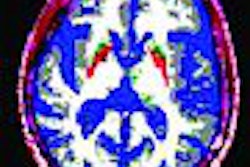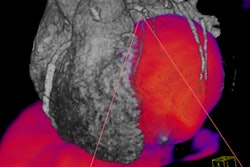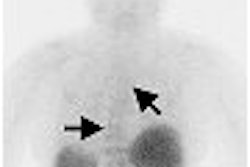Dear AuntMinnie Member,
The spectacular fly-through studies produced by virtual bronchoscopy exams are usually generated using CT data. But a group from Stanford University is investigating the use of PET/CT for this still-experimental application.
The news comes from this week's Academy of Molecular Imaging meeting in Orlando, FL. Staff writer Jonathan S. Batchelor was on hand to report for our Molecular Imaging Digital Community.
In research on phantoms, the group used a combination of custom and commercially available software to create fly-through movies. They were able to detect a series of capsules designed to look like polyps that were placed in the phantoms -- and in several cases PET was able to detect capsules that CT had missed. Read all about their work by clicking here.
In another study, a University of California, Los Angeles, group presented research recommending changes to the current PET/CT protocol for whole-body scanning of melanoma patients. They believe the protocol could be providing little clinical value and may be keeping patients on the scanning table longer than necessary. Get more details by clicking here.
In a third study, Dutch researchers presented a study in which they moved PET farther up in the diagnostic algorithm for post-therapy cancer patients with elevated serum tumor markers. Find out how this impacted patient management by clicking here.
For these stories and more coverage from the AMI show, just visit our Molecular Imaging Digital Community, or go to molecular.auntminnie.com.




















